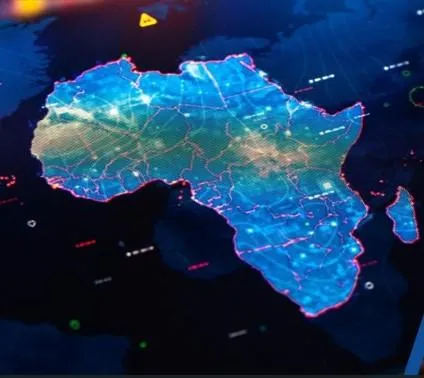Sub-Saharan Africa holds steady at 4.1% despite trade tensions, tight borrowing, aid cuts: IMF
SUB-SAHARAN ECONOMY

While the region continues to show resilience, the IMF warned that global headwinds — including weaker demand, softer commodity prices, and tighter financial markets — are testing its recovery and reform momentum.
Image: Supplied
The International Monetary Fund (IMF) expects Sub-Saharan Africa’s economic growth to hold steady at 4.1% in 2025, with a modest pickup anticipated in 2026, according to its October Regional Economic Outlook for Sub-Saharan Africa released on Thursday.
While the region continues to show resilience, the IMF warned that global headwinds — including weaker demand, softer commodity prices, and tighter financial markets — are testing its recovery and reform momentum.
“Six months ago, our assessment highlighted the region's strong efforts and that growth had exceeded expectations last year,” said Abebe Aemro Selassie, director of the African Department at the IMF.
"But we also noted the sudden realignment of global priorities and increasing turbulent external conditions, marked by weaker demand, softer commodity prices, and tighter financial markets. Today, these global headwinds continue to test the region's recovery and resilience."
Selassie credited the region’s steady growth to macroeconomic stabilization and ongoing reform efforts across major economies.
He said that several countries — including Benin, Côte d’Ivoire, Ethiopia, Rwanda, and Uganda — rank among the fastest-growing economies in the world.
"However, we still have quite a few resource-intensive countries and conflict-infected countries continuing to face significant challenges, with only modest gains in per capita incomes," Selassie said.
"The external environment remains challenging, global growth is slowing, and commodity prices are diverging. Notably oil prices are declining, while the price of copper, coffee, and gold is fairly elevated. And external financing conditions have improved somewhat, allowing a few countries – Kenya and Angola most recently – to access international capital markets."
Selassie also flagged growing risks from a deteriorating global trade and policy landscape, including higher tariffs on exports to the United States and the expiration of preferential access under the African Growth and Opportunity Act (Agoa).
Although the region’s direct exposure to U.S. trade is limited, he said that rising policy uncertainty is dampening investment and export growth.
"The projected sharp decline in foreign aid also leaves some low-income and fragile countries particularly exposed. Affected governments have sought to reallocate budgetary resources, but with limited fiscal space they have limited room for manoeuvre," Selassie said.
"Notwithstanding these challenges, it's been really good to see the region showing strong resilience, but this will continue to be tested in the coming months."
The Regional Economic Outlook for Sub-Saharan Africa identified several key pressure points.
Selassie said these include rising debt service costs, which are crowding out development spending; a shift toward domestic financing that is deepening the sovereign-bank nexus; inflation that has eased at the regional level but remains in double digits in about one-fifth of the region; and external buffers that are under pressure and need to be rebuilt.
Against this difficult backdrop, the Outlook highlights two broad policy priorities: domestic revenue mobilization and debt management.
"There is significant potential for countries in the region to raise revenues through comprehensive tax policy reforms and improved tax administration. This includes modernizing tax systems through digitalization, streamlining inefficient tax expenditures, and strengthening enforcement via targeted compliance strategies," Selassie said.
However, Selassie said these efforts must go beyond technical adjustments.
"It will be essential to build public trust in tax institutions, strengthen institutional capacity, and conduct careful impact assessments—including distributional analysis—to ensure that reforms are both effective and equitable."
Selassie also said enhancing debt transparency and strengthening public financial management can help reduce borrowing costs and unlock innovative financing. He said publishing comprehensive debt data and reinforcing budget oversight are key steps forward.
"These priorities are critical for building resilience and supporting inclusive, sustainable growth across sub-Saharan Africa. The IMF remains committed to supporting the region. Since 2020, we have disbursed nearly $69 billion, including about $4bn so far this year. Our capacity development efforts also remain substantial, with sub-Saharan Africa as the largest recipient."
BUSINESS REPORT